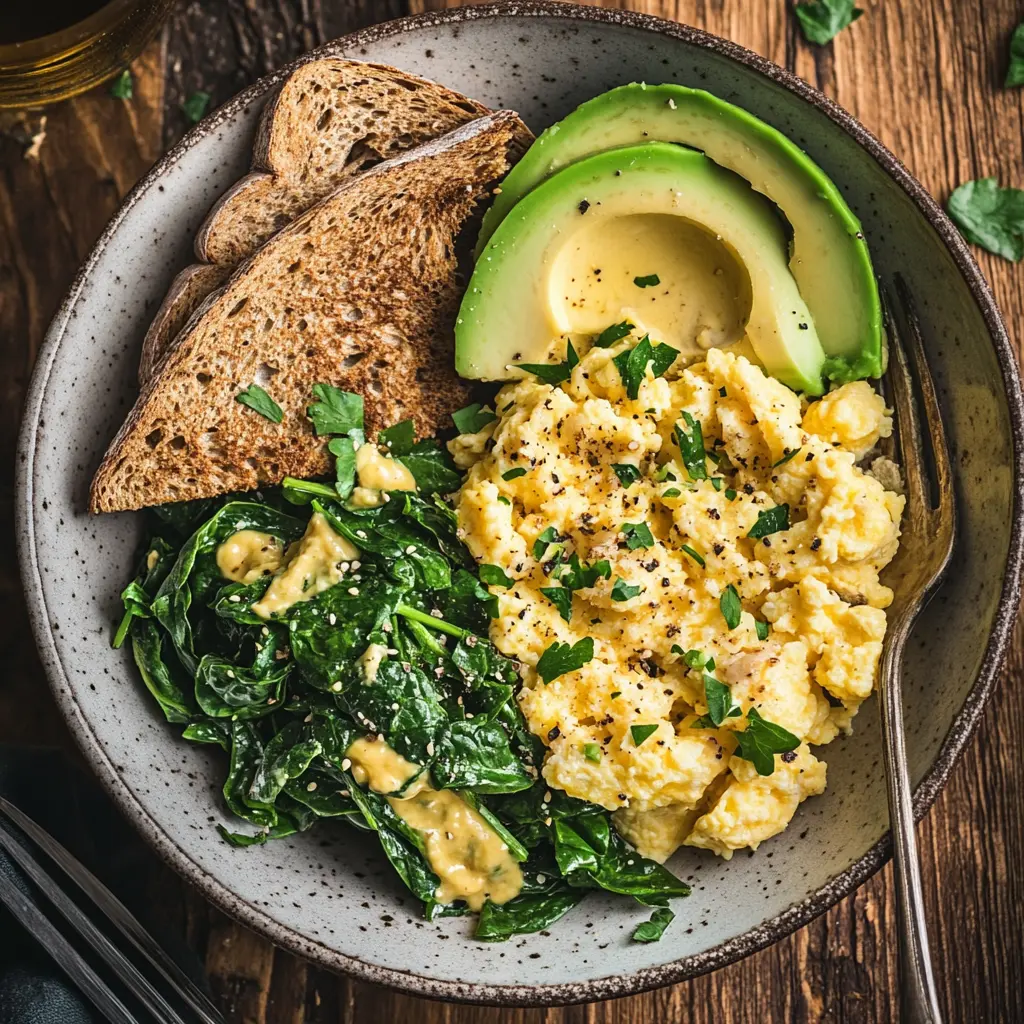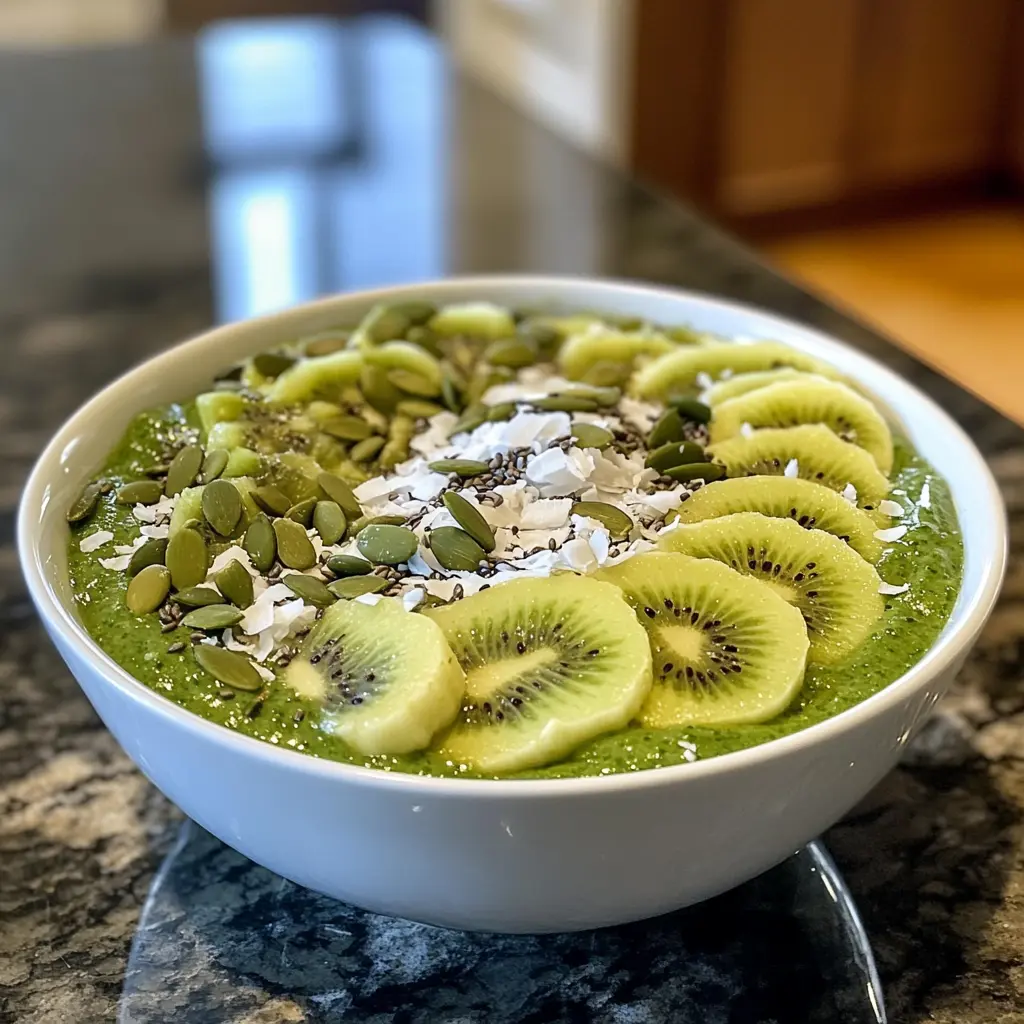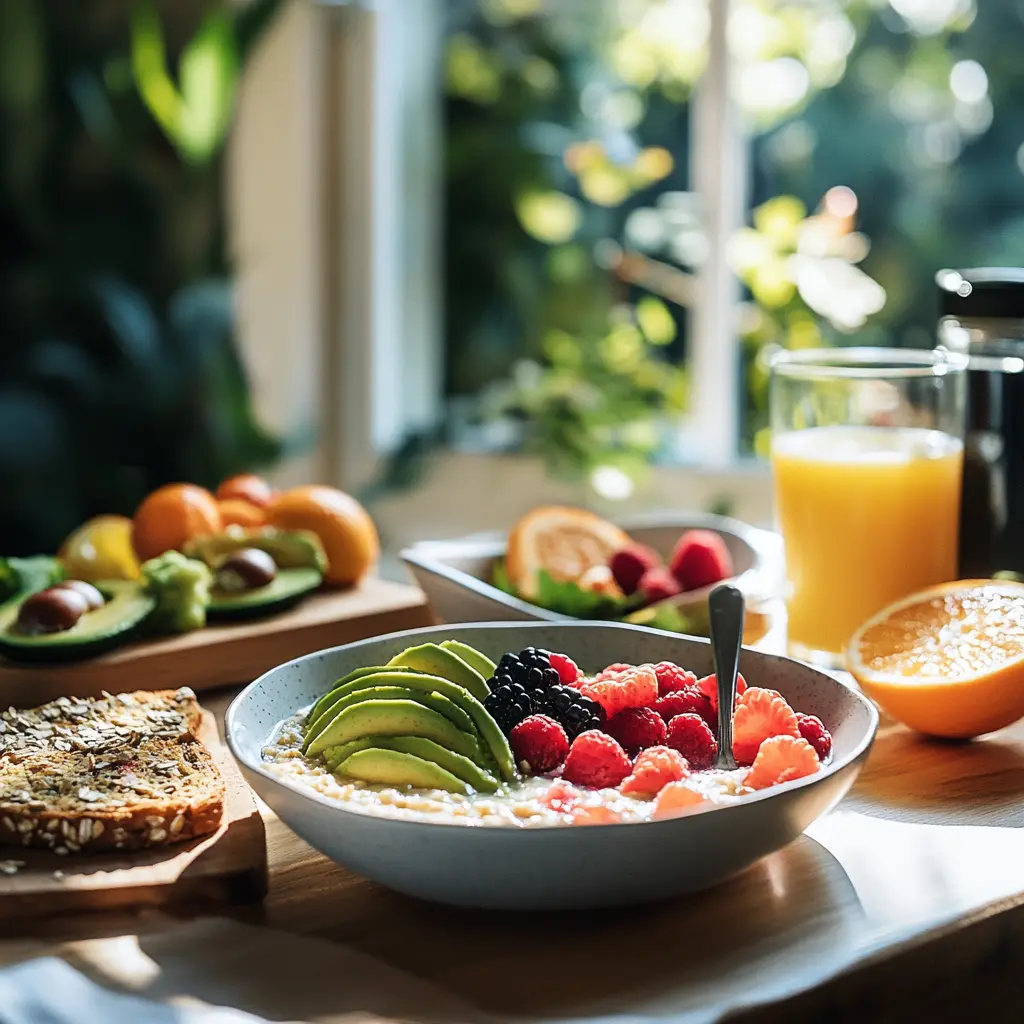Introduction
A healthy breakfast is often called the most important meal of the day—and for good reason! It kickstarts your metabolism, fuels your body for the day ahead, and can even impact your mood and mental sharpness. But finding the perfect breakfast ideas that are both nutritious and satisfying can feel like a chore. This article explores creative and healthy breakfast options, from balanced meal components to quick recipes for busy mornings. Let’s dive into why breakfast matters and how to make it work for you.
Part 1: Understanding the Importance of a Healthy Breakfast
Introduction to Healthy Breakfasts
What does it mean to have a healthy breakfast? Simply put, it’s the kind of meal that energizes your body without weighing you down. Unfortunately, many skip breakfast, thinking it saves time or cuts calories. However, eating a balanced morning meal provides long-term benefits, ensuring you start the day on the right foot.
Nutritional Benefits of Eating Breakfast
Breakfast replenishes your body with essential nutrients after a night of fasting. Foods rich in vitamins, minerals, and macronutrients give you sustained energy and mental clarity. Plus, a nutrient-packed breakfast helps stabilize blood sugar levels, keeping hunger pangs and energy slumps at bay. When you choose whole grains, proteins, and healthy fats, you’re investing in a productive and active day ahead.
Consequences of Skipping Breakfast
Skipping breakfast might feel like no big deal, but it can wreak havoc on your health over time. For starters, it often leads to overeating later in the day, which can derail weight management goals. Worse, it can sap your energy, affect focus, and make you more prone to irritability. Studies also show that consistently missing breakfast increases the risk of developing chronic conditions, like type 2 diabetes and heart disease.
Part 2: Components of a Balanced Breakfast
A balanced breakfast is all about combining the right ingredients to fuel your body, satisfy your hunger, and keep you energized until your next meal. By understanding the role of macronutrients, micronutrients, and fiber, you can create a well-rounded meal that’s both delicious and nutritious.
Macronutrients in a Healthy Breakfast
Macronutrients—carbohydrates, proteins, and fats—are the foundation of any meal, and breakfast is no exception. Let’s break down how each contributes to a strong start to your day.
- Carbohydrates for Energy
Carbs are your body’s primary energy source, and starting the day without them is like trying to drive a car on an empty tank. Opt for complex carbohydrates like whole grains, oats, and fruits. These provide a slow, steady release of energy, unlike refined carbs that cause a sugar crash. For example, oatmeal topped with fresh berries is a fiber-packed option that delivers lasting energy. Similarly, whole-grain bread with avocado offers a double dose of fiber and healthy fats. - Proteins for Satiety and Muscle Repair
Protein is a superstar for keeping hunger at bay. It not only fuels muscle repair but also stabilizes blood sugar levels. High-protein foods like eggs, Greek yogurt, and cottage cheese are excellent breakfast choices. For a quick and balanced meal, pair scrambled eggs with whole-grain toast or blend a protein smoothie with Greek yogurt, spinach, and banana. These options ensure you stay full and energized for hours. - Fats for Flavor and Brain Health
Healthy fats are essential for brain function and overall well-being. Incorporate sources like nuts, seeds, avocados, and nut butters into your breakfast. Not only do these add flavor and texture, but they also help your body absorb fat-soluble vitamins. A chia seed pudding made with almond milk and topped with walnuts is a fantastic way to include healthy fats in your morning meal.

Micronutrients and Their Importance
Micronutrients, though needed in smaller amounts, play a massive role in your health. A breakfast rich in vitamins and minerals supports immunity, energy production, and overall vitality.
- Vitamins for a Nutritional Boost
Vitamin C-rich fruits like oranges, strawberries, and kiwis help strengthen your immune system. Pair them with vitamin D-fortified milk or yogurt to support bone health. Meanwhile, leafy greens in a breakfast wrap or smoothie add a bounty of vitamins A, K, and folate. - Minerals for Body Function
Minerals like calcium, magnesium, and potassium are critical for muscle function and nerve signaling. You can find calcium in dairy or plant-based alternatives, while bananas and sweet potatoes are excellent potassium sources. Don’t forget to sprinkle chia or flaxseeds on your meals for a magnesium boost.
Incorporating Fiber into Your Morning Meal
Fiber is the unsung hero of a healthy breakfast. It supports digestion, promotes satiety, and helps regulate blood sugar. There are two types of fiber you’ll want to include:
- Soluble Fiber
This type of fiber, found in oats, beans, and fruits like apples, helps lower cholesterol and stabilize blood sugar. A bowl of oatmeal with sliced apples and a dash of cinnamon is a simple yet satisfying choice. - Insoluble Fiber
Found in whole grains, nuts, and seeds, insoluble fiber keeps your digestive system moving smoothly. Add a handful of almonds to your yogurt parfait or enjoy whole-grain toast with peanut butter to up your fiber intake.
Examples of Balanced Breakfast Combinations
Creating a balanced breakfast doesn’t have to be complicated. Here are a few ideas to inspire your morning routine:
- Classic Combo: Scrambled eggs, whole-grain toast, and a side of mixed berries.
- Plant-Based Delight: A smoothie made with almond milk, spinach, chia seeds, and mango slices.
- Savory Start: Avocado toast topped with a poached egg and a sprinkle of flaxseeds.
- On-the-Go Option: A whole-grain wrap stuffed with hummus, spinach, and shredded carrots.
- Sweet and Satisfying: Greek yogurt with granola, walnuts, and a drizzle of honey.
Tips for Customizing Your Balanced Breakfast
Everyone’s nutritional needs are unique, so feel free to tweak these ideas to suit your preferences. Here’s how:
- For Weight Loss: Focus on high-protein and high-fiber foods that keep you full longer.
- For Active Lifestyles: Add an extra serving of carbs or a scoop of protein powder to your breakfast.
- For Picky Eaters: Disguise veggies in smoothies or sneak seeds and nuts into baked goods.
Part 3: Healthy Breakfast Ideas
Breakfast can be exciting and versatile while staying nutritious. Whether you’re rushing out the door or enjoying a slow morning, these healthy breakfast options cater to various dietary needs and preferences. From quick fixes to elaborate meals, there’s something for everyone.
Quick and Easy Breakfast Options
For busy mornings, fast and healthy breakfast recipes are a lifesaver. These ideas take minimal time but pack a nutritional punch.

- Smoothies and Shakes
Blend a smoothie with spinach, frozen berries, Greek yogurt, and almond milk for a nutrient-dense, drinkable meal. Add a tablespoon of chia seeds or flaxseeds for extra fiber and omega-3s. Protein shakes with a scoop of powder, a banana, and unsweetened almond milk are another speedy option. - Overnight Oats and Chia Pudding
Prepare overnight oats with rolled oats, almond milk, and a touch of honey, then top with fruits and nuts in the morning. Similarly, chia pudding made with coconut milk and topped with granola is a no-cook solution for busy schedules.
High-Protein Breakfast Choices
If you need sustained energy throughout the day, high-protein options are ideal.
- Egg-Based Dishes
Scrambled eggs with sautéed spinach and mushrooms offer a savory, protein-packed start. If you’re short on time, boil a batch of eggs in advance and pair them with whole-grain crackers for a grab-and-go breakfast. - Greek Yogurt Parfaits
Layer Greek yogurt with granola and fresh berries for a breakfast that’s as beautiful as it is nutritious. Add a drizzle of honey or a sprinkle of pumpkin seeds for texture and natural sweetness.
Plant-Based Breakfast Ideas
For those following a vegan or vegetarian diet, plant-based breakfasts are nutrient-rich and delicious.
- Vegan Smoothie Bowls
Blend frozen bananas, almond milk, and spinach into a thick base, then top with sliced kiwi, shredded coconut, and sunflower seeds. These bowls are customizable and packed with vitamins. - Tofu Scramble
Crumble firm tofu and sauté it with turmeric, black pepper, and diced vegetables. Serve it with whole-grain toast for a hearty and satisfying morning meal.
Low-Carbohydrate Breakfast Selections
If you’re watching your carb intake, there are plenty of tasty options.
- Vegetable Frittatas
Whisk eggs with chopped zucchini, bell peppers, and spinach, then bake it all together for a quick and portable frittata. These can be prepped in muffin tins for easy portion control. - Avocado Bowls
Scoop out an avocado and fill it with a soft-boiled egg or a dollop of hummus. Sprinkle with chia seeds or crushed nuts for added texture and flavor.
International Healthy Breakfast Inspirations
Take a culinary journey with globally inspired breakfast ideas.
- Mediterranean Breakfast Platters
Combine whole-grain pita, hummus, olives, cherry tomatoes, and cucumber slices for a fresh, balanced plate. Add a side of hard-boiled eggs or feta cheese for protein. - Asian-Inspired Congee
Try a savory rice porridge made with vegetable broth, ginger, and scallions. Top it with tofu or a poached egg for a warm, comforting meal.
Part 4: Practical Tips and Common Breakfast Challenges
Creating a healthy breakfast routine is easier said than done, especially with busy schedules and picky eaters in the mix. However, with a little planning and creativity, you can overcome these hurdles. This section offers practical tips for meal prepping and solutions to common breakfast challenges.
Meal Prepping for Breakfast
Meal prepping can save time and ensure you have nutritious options ready to go. Here’s how to get started:
- Batch Cooking for the Week
Prepare items like overnight oats, smoothie packs, or egg muffins in bulk over the weekend. Store them in airtight containers, so you can simply grab and go during busy mornings. For instance, bake a large veggie frittata, slice it into portions, and refrigerate for quick reheating. - Use Freezer-Friendly Foods
Freeze smoothie ingredients in individual bags—just toss them into a blender with your choice of liquid when needed. You can also make and freeze breakfast burritos filled with scrambled eggs, beans, and veggies for a hearty option. - Incorporate Variety
Rotate your breakfast recipes weekly to avoid monotony. For example, enjoy oatmeal on Mondays, avocado toast on Tuesdays, and chia pudding midweek. Variety keeps you engaged and ensures a broader range of nutrients.
Addressing Common Breakfast Challenges
Despite the best intentions, some obstacles can derail even the most enthusiastic breakfast plans. Here are solutions to some of the most common problems.
- “I Don’t Have Time for Breakfast”
For rushed mornings, prioritize quick options like pre-made energy balls, whole-grain toast with nut butter, or protein bars. If even that feels like too much, try consuming a smoothie on the go. - “I’m Not Hungry in the Morning”
Start small by having light, easy-to-digest options like a banana, yogurt, or a handful of nuts. Gradually increase portion sizes as your body gets used to the morning meal. - “My Kids Are Picky Eaters”
Get creative by sneaking healthy ingredients into fun formats. For example, blend spinach or carrots into pancakes, or make colorful fruit parfaits. Engaging kids in the preparation process can also spark their interest in eating what they helped create. - “I’m on a Tight Budget”
Healthy doesn’t have to mean expensive. Opt for budget-friendly staples like oats, bananas, eggs, and frozen fruits. These are not only affordable but also versatile. For example, an oatmeal bowl topped with sliced banana and a drizzle of honey is both cost-effective and nourishing.
The Role of Breakfast Habits
Building a morning routine centered around breakfast can make all the difference. Setting aside 10–15 minutes for your meal allows you to savor your food and start the day on a positive note. Consistency is key; the more regular your breakfast habits, the easier it becomes to stick with them.
Frequently Asked Questions About Healthy Breakfast Ideas
Addressing common questions about healthy breakfasts can help clear doubts and provide practical advice. Below are some of the most frequently asked questions, answered in detail.
1. What are some healthy breakfast options for weight loss?
When aiming for weight loss, focus on high-protein, high-fiber breakfasts that keep you full longer. Options like egg-white omelets with veggies, Greek yogurt with chia seeds and berries, or a smoothie made with spinach, protein powder, and unsweetened almond milk are excellent choices. Avoid sugary cereals and processed pastries that cause energy crashes.
2. Can I have a healthy breakfast on a tight budget?
Absolutely! Affordable ingredients like oats, bananas, and eggs can form the foundation of a nutritious breakfast. A bowl of oatmeal topped with sliced banana and a sprinkle of cinnamon costs less than a cup of coffee and provides lasting energy. Additionally, frozen fruits and vegetables are economical and just as nutritious as fresh ones.
3. How can I make my breakfast more filling?
To create a satisfying meal, combine macronutrients like protein, complex carbs, and healthy fats. For example, pair avocado toast with a poached egg or add almond butter to a smoothie. Adding fiber-rich foods like chia seeds, flaxseeds, or whole grains can also increase satiety.
4. Is it okay to have a sweet breakfast?
Yes, as long as the sweetness comes from natural sources like fruits or honey, and the meal is balanced. For instance, Greek yogurt parfaits with berries and granola or whole-grain waffles topped with nut butter and sliced fruit can satisfy your sweet tooth without derailing your nutrition goals.
5. What are good breakfast choices for children?
Kids need energy-packed meals to fuel their active lifestyles and growing bodies. Try whole-grain pancakes with peanut butter, scrambled eggs with whole-grain toast, or smoothies with hidden veggies like spinach or carrots. Making food visually appealing—like arranging fruit into fun shapes—can also encourage picky eaters to enjoy their meals.
6. How does breakfast affect mental performance?
Breakfast provides glucose, the brain’s primary energy source, which is essential for concentration and memory. Skipping breakfast often leads to brain fog and irritability. Including foods rich in omega-3s, like walnuts, or antioxidants, like berries, can further boost cognitive function.
7. Can I skip breakfast if I’m practicing intermittent fasting?
Skipping breakfast while intermittent fasting can work for some individuals. However, if you choose to eat breakfast later in the day, ensure it’s nutrient-dense and balanced to meet your dietary needs. For example, break your fast with a protein-packed smoothie or an avocado and egg wrap.
8. What are some portable healthy breakfast ideas?
For breakfast on the go, try energy bars made from oats and dates, whole-grain wraps with hummus and veggies, or hard-boiled eggs paired with a piece of fruit. These options are easy to prep and perfect for busy mornings.
9. What is the healthiest breakfast to have?
The healthiest breakfast is one that is balanced, nutrient-rich, and tailored to your dietary needs. A combination of whole grains, lean protein, healthy fats, and fresh fruits or vegetables makes for a perfect start to the day. Examples include oatmeal topped with nuts and berries, a veggie-packed omelet with avocado slices, or a smoothie with spinach, banana, almond milk, and chia seeds. These meals provide essential nutrients, keep you full, and stabilize blood sugar levels.
10. What is the best breakfast to lose weight?
For weight loss, focus on high-protein and high-fiber meals that curb hunger and prevent overeating later in the day. Some great options include:
- Scrambled eggs with sautéed spinach and whole-grain toast.
- Greek yogurt with chia seeds, fresh fruit, and a drizzle of honey.
- A smoothie with unsweetened almond milk, protein powder, spinach, and frozen berries.
Avoid sugary cereals or pastries, as they can lead to energy crashes and cravings.
11. What is the world’s No. 1 healthy breakfast?
While opinions may vary, oatmeal often tops the list as the world’s No. 1 healthy breakfast. It’s a versatile, nutrient-dense option rich in fiber, antioxidants, and essential minerals. Topping it with fruits, nuts, and a dollop of nut butter enhances its flavor and nutritional value. Other contenders include avocado toast with eggs and Mediterranean breakfast platters, which are balanced and heart-healthy.
12. What to eat in the morning for a healthy breakfast?
A healthy breakfast should include a mix of macronutrients (carbohydrates, proteins, and fats) along with essential vitamins and minerals. Here are some ideas:
- For energy: Whole-grain toast or oatmeal.
- For protein: Eggs, Greek yogurt, or plant-based options like tofu.
- For healthy fats: Avocado, nuts, or seeds.
- For vitamins and fiber: Fresh fruits and leafy greens.
You can try something as simple as a yogurt parfait with granola and berries or a veggie-loaded smoothie bowl. The key is to keep it balanced and avoid heavily processed or sugary foods.
Conclusion
A healthy breakfast sets the tone for the day, fueling your body and mind for optimal performance. Whether you’re tackling weight loss, managing a busy schedule, or catering to picky eaters, there are countless ways to make breakfast work for you. By incorporating a mix of macronutrients, micronutrients, and fiber, you can create meals that are not only nutritious but also delicious and satisfying. Start experimenting with these ideas and transform your mornings into a source of energy and joy!

